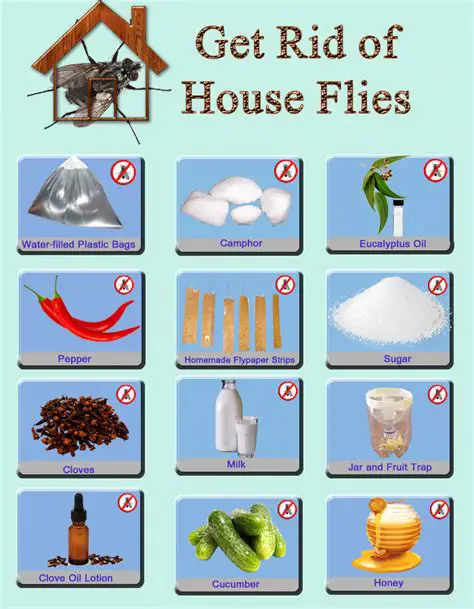
Introduction
Large flies, often referred to as houseflies or blow flies, are a common household nuisance. They are attracted to decaying organic matter, making them particularly prevalent in areas with poor sanitation or food waste. While they are generally harmless, large flies can carry bacteria and other pathogens that can cause illness. They can also be a source of annoyance, buzzing around, landing on food, and leaving unsightly droppings.
Types of Large Flies
There are several species of large flies that commonly infest homes:
- House flies (Musca domestica): The most common type found indoors, house flies are grayish-brown with four dark stripes on their thorax.
- Blow flies (Calliphoridae): Larger than house flies, blow flies have a metallic blue or green coloration and are attracted to decaying meat.
- Flesh flies (Sarcophagidae): Grayish or black in color, flesh flies are similar in size to blow flies and are attracted to decaying animal matter.
- Cluster flies (Pollenia rudis): Brownish-black in color, cluster flies are known for forming large clusters in sheltered areas during winter.
- Fruit flies (Drosophila spp.): Small, brownish flies that are attracted to rotting fruit and other sugary substances.
Health Concerns
While large flies are not typically considered dangerous, they can pose health risks:
- Bacteria and pathogens: Flies can transmit bacteria and other pathogens, such as Salmonella and E. coli, through their saliva, feces, and regurgitated food.
- Food contamination: Flies can contaminate food by landing on it and depositing bacteria or eggs.
- Allergic reactions: Some people may experience allergic reactions to fly bites or droppings.
Pain Points
The presence of large flies in a home can cause several pain points:
- Annoyance: Flies buzzing around, landing on people and food, can be extremely annoying.
- Unhygienic: Flies can contaminate food and surfaces with bacteria.
- Disease transmission: Flies can transmit diseases to humans.
- Damage to property: Some fly species can cause damage to fabrics and furniture by laying eggs or feeding on materials.
Motivations for Controlling Flies
There are several motivations for controlling large flies in a home:
- Health concerns: Preventing the spread of bacteria and disease.
- Annoyance reduction: Eliminating the nuisance of flies buzzing around and landing on people and food.
- Property protection: Preventing damage to fabrics and furniture.
- Peace of mind: Enjoying a fly-free home.
Prevention
Preventing large flies from entering a home is the most effective way to control them:
- Eliminate attractants: Remove sources of decaying organic matter, such as food waste, garbage, and pet feces.
- Keep food covered: Store food in airtight containers or the refrigerator.
- Cleanliness: Regularly clean surfaces and vacuum floors to remove potential breeding grounds for flies.
- Seal entry points: Check for cracks or gaps around windows, doors, and pipes and seal them to prevent flies from entering.
- Install fly screens: Install fly screens on windows and doors to keep flies out.
Control
If flies have already entered a home, there are several methods to control them:
- Fly traps: There are various types of fly traps available, including sticky traps, light traps, and baited traps.
- Fly swatters: Manual fly swatters can be used to kill flies on contact.
- Insecticides: Insecticides can be used to kill flies, but should be used with caution and according to the manufacturer’s instructions.
- Natural remedies: Certain essential oils, such as peppermint and lavender, can repel flies.
- Flypaper: Flypaper is a traditional method of catching flies, but it can be messy and unsightly.
Tips and Tricks
Here are some additional tips and tricks for controlling large flies:
- Use DIY fly traps: Create your own fly traps using items you have around the house, such as a jar with holes poked in the lid and baited with a sugary substance.
- Eliminate breeding grounds: Regularly empty garbage cans and compost bins, and clean up any spills or pet droppings immediately.
- Be patient: Controlling flies can take time and effort. Don’t get discouraged if you don’t see results immediately.
- Consult a professional: If you are unable to control flies on your own, consider consulting a professional pest control company.
Conclusion
Large flies in a home can be a nuisance and a health concern. By implementing effective prevention and control strategies, homeowners can keep their homes fly-free and enjoy a more comfortable and healthy environment.
